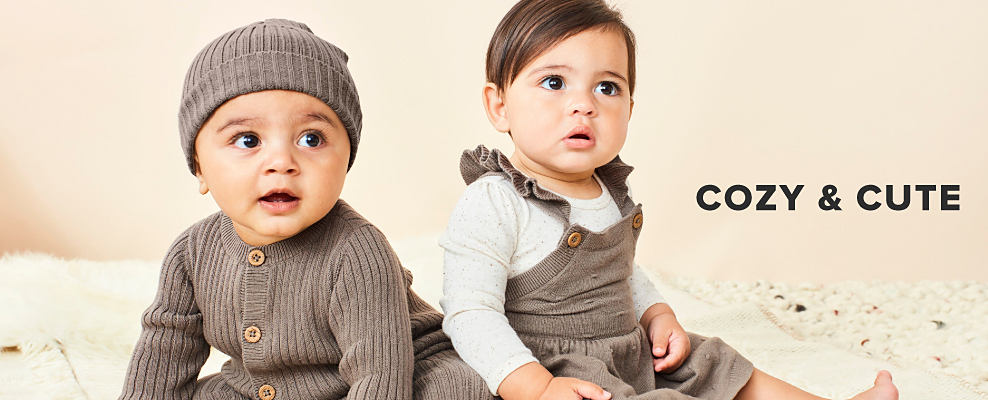Baby Clothing: A Comprehensive Guide for Parents
Introduction
The arrival of a new baby brings immense joy and excitement, and one of the most delightful aspects of preparing for their arrival is choosing their wardrobe. Baby clothing is not just about aesthetics; it plays a crucial role in their comfort, safety, and overall well-being. This comprehensive guide will provide parents with all the essential information they need to make informed decisions about baby clothing, from choosing the right fabrics and styles to ensuring proper care and maintenance.
Choosing the Right Fabrics
The fabric of baby clothing is paramount for their comfort and health. Here are some key factors to consider:
- Softness: Babies’ skin is delicate and prone to irritation, so choose fabrics that are soft and gentle to the touch. Natural fibers like cotton, bamboo, and silk are excellent choices.
- Breathability: Babies regulate their body temperature differently than adults, so it’s important to choose fabrics that allow their skin to breathe. Cotton and bamboo are highly breathable, while synthetic fabrics like polyester can trap heat and moisture.
- Durability: Babies are active and messy, so their clothing needs to be able to withstand frequent washing and wear. Look for fabrics that are durable and can hold up to multiple washes without losing their shape or color.
- Hypoallergenic: Some babies have sensitive skin that can react to certain fabrics. Choose hypoallergenic fabrics like cotton, bamboo, or organic materials to minimize the risk of irritation.
Essential Clothing Items
Every baby’s wardrobe should include a few essential items to ensure their comfort and well-being:
- Bodysuits: Bodysuits are the foundation of a baby’s wardrobe. They are easy to put on and take off, and they provide coverage for their entire body. Choose bodysuits made from soft, breathable fabrics with snap closures for easy diaper changes.
- Sleepers: Sleepers are one-piece outfits that are perfect for bedtime. They are typically made from soft, warm fabrics and feature feet to keep babies’ toes cozy.
- Pajamas: Pajamas are similar to sleepers but are designed for older babies who are more active. They usually consist of a top and bottom and are made from breathable fabrics like cotton or flannel.
- Hats: Babies lose a lot of heat through their heads, so it’s important to keep them covered with a hat. Choose hats made from soft, breathable fabrics and ensure they fit snugly but not too tightly.
- Mittens and Booties: Mittens and booties help keep babies’ hands and feet warm. Choose mittens made from soft, breathable fabrics and booties with non-slip soles for added safety.
Choosing the Right Size
Choosing the right size for baby clothing is crucial for their comfort and safety. Here are some tips:
- Check the size chart: Most clothing manufacturers provide a size chart that indicates the measurements for each size. Refer to the chart to determine the size that corresponds to your baby’s weight and height.
- Consider your baby’s growth rate: Babies grow rapidly, so it’s a good idea to buy clothing that is slightly larger than their current size. This will give them room to grow and prevent them from outgrowing their clothes too quickly.
- Allow for shrinkage: Some fabrics, such as cotton, can shrink when washed. When choosing the size, consider the potential for shrinkage and buy clothing that is slightly larger than you think you need.
Safety Considerations
Baby clothing should not only be comfortable but also safe. Here are some safety considerations to keep in mind:
- Avoid loose strings or ties: Loose strings or ties can pose a strangulation hazard for babies. Choose clothing that is free of any loose or dangling parts.
- Check for sharp edges: Inspect clothing for any sharp edges or protruding objects that could scratch or cut your baby’s skin.
- Avoid clothing with buttons or zippers: Buttons and zippers can be dangerous for babies, as they can be easily swallowed or cause choking. Choose clothing with snaps or Velcro closures instead.
- Ensure proper fit: Clothing should fit snugly but not too tightly. Tight clothing can restrict movement and cause discomfort, while loose clothing can be a tripping hazard.
Care and Maintenance
Proper care and maintenance of baby clothing is essential for their longevity and hygiene. Here are some tips:
- Wash before use: Always wash new baby clothing before putting it on your baby. This will remove any chemicals or dyes that may irritate their skin.
- Use a gentle detergent: Choose a detergent that is specifically designed for baby clothes. Avoid using harsh detergents or bleach, as these can damage the fabric and irritate your baby’s skin.
- Wash in cold water: Cold water is gentler on baby clothes and helps prevent fading and shrinkage.
- Tumble dry on low heat: If possible, tumble dry baby clothes on low heat to prevent shrinkage and damage.
- Iron on low heat: If necessary, iron baby clothes on low heat to remove wrinkles. Avoid ironing directly on prints or embellishments.
Conclusion
Choosing and caring for baby clothing is an important aspect of parenting. By understanding the different fabrics, styles, and safety considerations, parents can make informed decisions that ensure their baby’s comfort, well-being, and safety. Remember to prioritize soft, breathable fabrics, choose the right size, and follow proper care and maintenance guidelines to keep your baby’s wardrobe fresh, clean, and ready for all their adventures.

